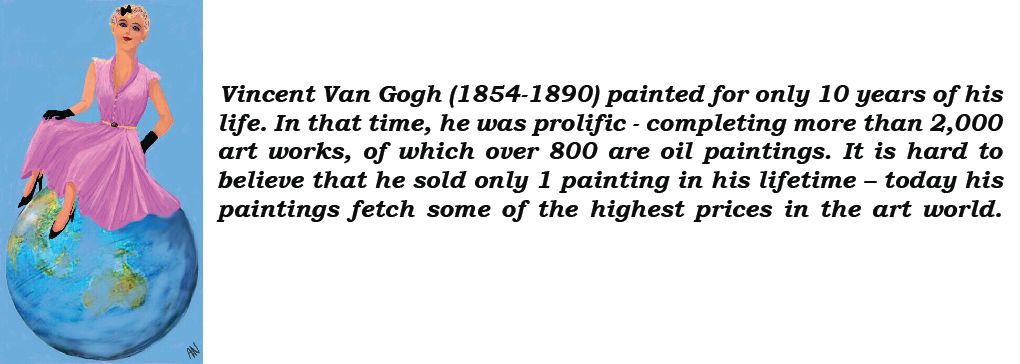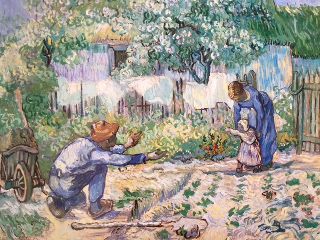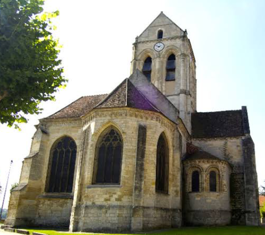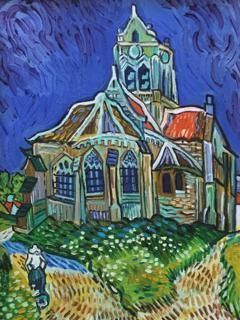Two Favourite Van Gogh Paintings

How very fortunate that Helene Kroller Mueller, whom I mentioned in a previous blog was so taken with his work, she established the Kroller Mueller museum, which as I mentioned holds the largest collection of his works and was largely responsible for making his works famous.

Vincent suffered ill health for most of his life – physically debilitated by poor eating habits, a liking for absinthe exacerbated by the fumes of turpentine and other chemicals. He was also mentally unstable and suffered psychotic episodes.
In 1993 the National Gallery of Victoria featured First Steps as the poster to advertise its winter exhibition – Van Gogh – His Sources, His Genius and His Influences. The image above is taken from the Exhibition catalogue - which features John Peter Russell's portrait of Vincent van Gogh as the Frontispiece- how remiss of me to forget seeing it - but then it was way back in 1993!
As we learned in this exhibition, Vincent often used the work of other artists, to influence his work. In this case Jean-Francois Millet.
Vincent painted twenty-one copies after Millet, an artist he greatly admired. He considered his copies "translations" akin to a musician's interpretation of a composer's work. He let the black-and-white images…pose "as a subject," then he would "improvise color on it. (metmuseum.org).
Vincent was surprised Millet limited himself to monochrome and was 'confounded at how little colour Millet used' (Letter 590 from Vincent to his brother Theo).
He went on to say 'I want to paint something comforting, as music in comforting. I want to paint men and women {as…} eternal which the halo used to symbolise' (Letter 531 from Vincent to his brother Theo).
(Note Vincent’s comparisons to music which Anne covered recently).
First Steps expresses joy by the parents and trust by the child – a gentle normal family scene, painted in soft tones of blue and yellow, which was apparently unusual for his Saint-Remy period.
A poster of First Steps hung in my office for many years and was a source of tranquillity and grounded me to offset the mad pace of the business world.
Vincent spent the last 3 months of his life in Auvers-sur-Oise, just 30 kilometres from Paris, in a small boarding house. He completed a staggering 77 paintings during this time – that’s more than one a day!
One of his paintings in particular has fascinated me - L’eglise below


Colouring of the church is almost non-existent; even the stained-glass windows are devoid of colour. In fact, other than an imposing façade, there seems very little to attract the attention of a painter. However, Vincent saw it very differently as he wrote to his sister Wilhelmina in June 1890 Vincent wrote:
‘I have a larger picture of the village church - an effect in which the building appears to be violet-hued against a sky of simple deep blue colour, pure cobalt; the stained-glass windows appear as ultramarine blotches, the roof is violet and partly orange. In the foreground some green plants in bloom, and sand with the pink flow of sunshine in it’.
While there is some dispute over the last painting Vincent completed before his suicide vggallery.com consider it most likely to be Daubigny’s Garden, as shown in the hero image today. When compared to First Steps its apparent that his state of mind in his final days was quite chaotic as Daubigny’s Garden has a sense of turbulence.
Where to now? Anne and I would love you to share your favourite painting with us. Send us a short description of why you love the painting or sculpture (any piece of art) and we will write up an analysis for you. In the meantime Anne has discovered a new modern American Impressionist painter for us.
